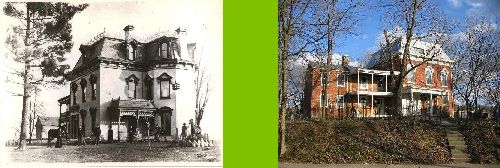
They knock down an old structure which is generally located between other structures and rebuild using newer materials. You won't find any wooden structures around here. Everything is iron, concrete and ceramic. The apartments get taller. You will often see these ceramic blocks being used to add a fourth or fifth storey to an existing, older building. These apartments average around 700 sq. ft. in area and are expensive. In the area we were staying they range between 170,000 Euros and 225,000 Euros depending on size. Which translates at the current rate of exchange to be around $272,000 to $360,000 for a shoebox! Anyway, here are some more scenes from the streets of Spain for your viewing pleasure.




Since stairs are an integral part of daily life here and many people live on the slopes of mountains the one thing that you will notice above all is that most people are slender and fit. I do believe that this will change soon .....


8 comments:
Spain sounds amazing. I hope to visit one day. Did you go anywhere other than Costa Blanca?
I went to Toledo Spain, and I think most of the buildings were around 1000 years old. They didn't have any city planning back then, so it was almost impossible not to get lost walking around that maze of streets.
Difficult land conditions state that cities and even towns grow upwards. It's also fun to notice how floor level affects the price. It used to be that first floor was valued, because top floor got all the rain and ground floor all the shit. Now street level is valued, because of all the business those streets bring in also top floors are valued because of the view. So it changes, but Spanish houses will never be made of wood, right?
Spent many very fun summers in Alicante :-) The thing about Costa Blanca is that for many year trains & buses did not conveniently & regularily run anywhere south of Alicante, so the tourists never really hit that area hard. Doesn't surprise me that you were seeing new construction because in the 70's-90's south fo Alicante there was none.
Oh! You've made me wistful for travel...Spain is beautiful; I'd love to get back.
We just got back from Scotland and the story there is similar, particularly the knocking down buildings between two others to build a new one, and "building up" which edinburgh is quite famous for - since they literally raised the main street about 2 stories about 200 years ago.
Of course, it makes for interesting architectural features when a 250 year old structure is attached to a 30 year old structure, and in Scotland there isn't heavy use of stucco. Sometimes things just don't match. Nonetheless, beautiful city.
You've just added Spain to the places we need to visit.
Those pictures make me miss Spain! It was sure fun! Thanks for sharing.
The extensive use of stone, brick and concrete, either bare or covered in stucco is pretty much consistent throughout Europe except for scandinavia where they have plenty of wood but presumeably not as much stone or clay to make bricks of. I think larger cities even banned wood construction around the 16th or early 17th century to reduce the risk of large fires. I remember a story about old Vienna (date range I mentioned above). it says that all old paintings of the citiy show red roofs. That is because roofs were supposed to be covered with ceramic tile (not combustible) but rather the cheaper wooden shingles were used and painted red... just to explain why you aren't going to see much wood traveling in Europe except for log homes in the mountains.
Unless a large investor manages to buy up an entire block single old houses are razed and a new one built in their place, occasionally extending over two adjacent lots but hardly more.
Way back when cities weren't actually planned but rather grew naturally. The farm land was already divided into parcels, and as individual farmers sold their property, houses were built on the former fields. Thus, the lots followed the ancient, crooked property lines. During the late 19th century some attempts were made to straighten this in new developments, but that remained limited to a couple of areas. This continued throughout the 20th century, although there still were streets that didn't fit any kind of grid and to this day, some new developments look fairly crooked.
In Austria (and many other countries) the second floor (by American counting, Europeans usually count ground floor, first floor, second floor,...) used to be the "piano nobile" as it's called in Italian, here the landlord would have his fancy apartment, three times as large as the others in the house, with parquet floors rather than plain plank floors, own bathroom and everything. Ground floor apartments are notoriously dark, moist if there is no basement, and the curtains have to remain closed or anyone passing on the sidewalk can look in. The upper floors are hard to get up to without an elevator (which only the fanciest houses had around 1900).
Side note: there is one unfortunate thing with these houses, a fundamental design flaw: back then, it was fashionable to have windows overlooking the street rather than the back yard. Today, the streets are regarded as a noisy annoyance and everybody would love to have windows facing the back yard...
I won't say the streets were less noisy back then. Everybody who heard iron horseshoes on block paving, and 1900 trolleys screeching around corners or rattling over crossings will confirm streets were just as bad or even worse in 1900 as they're now.
Post a Comment